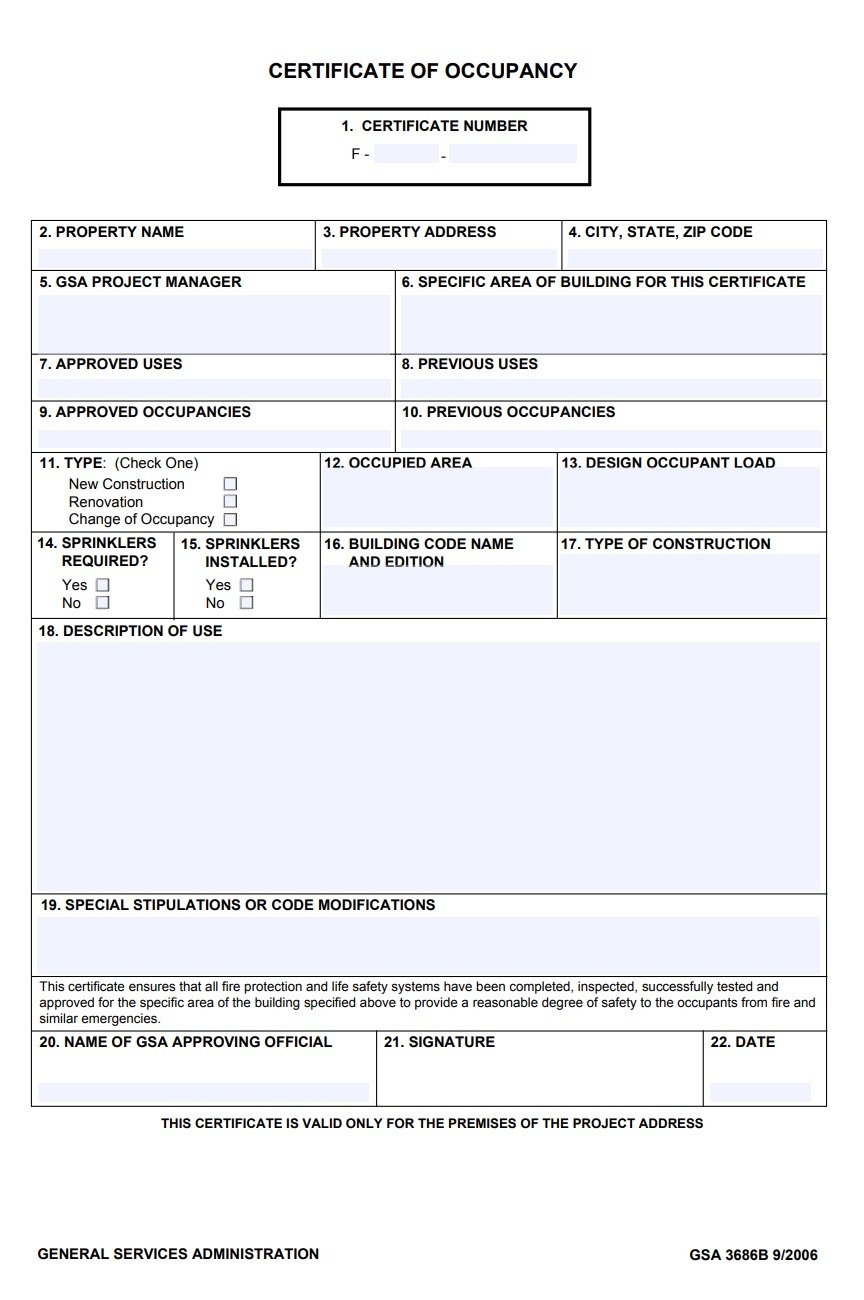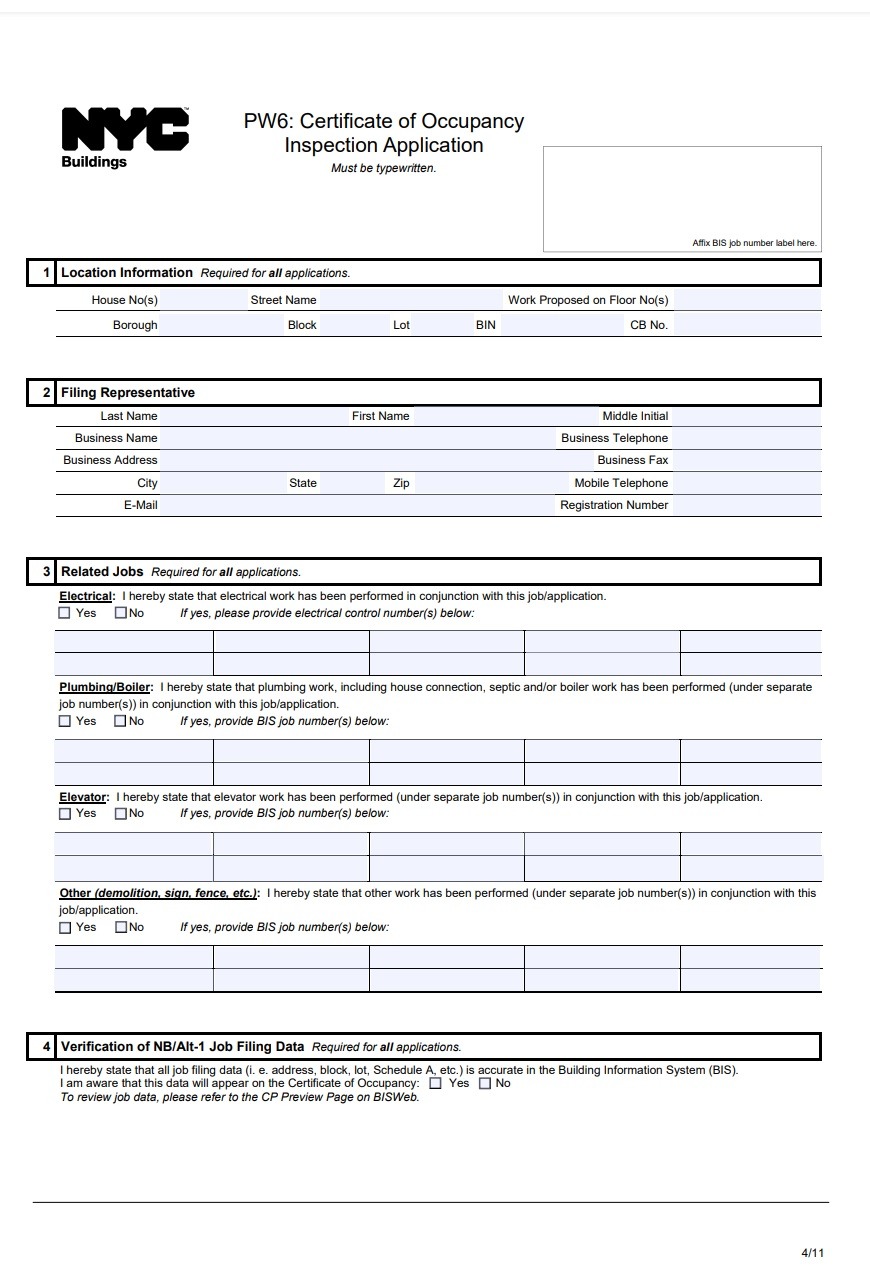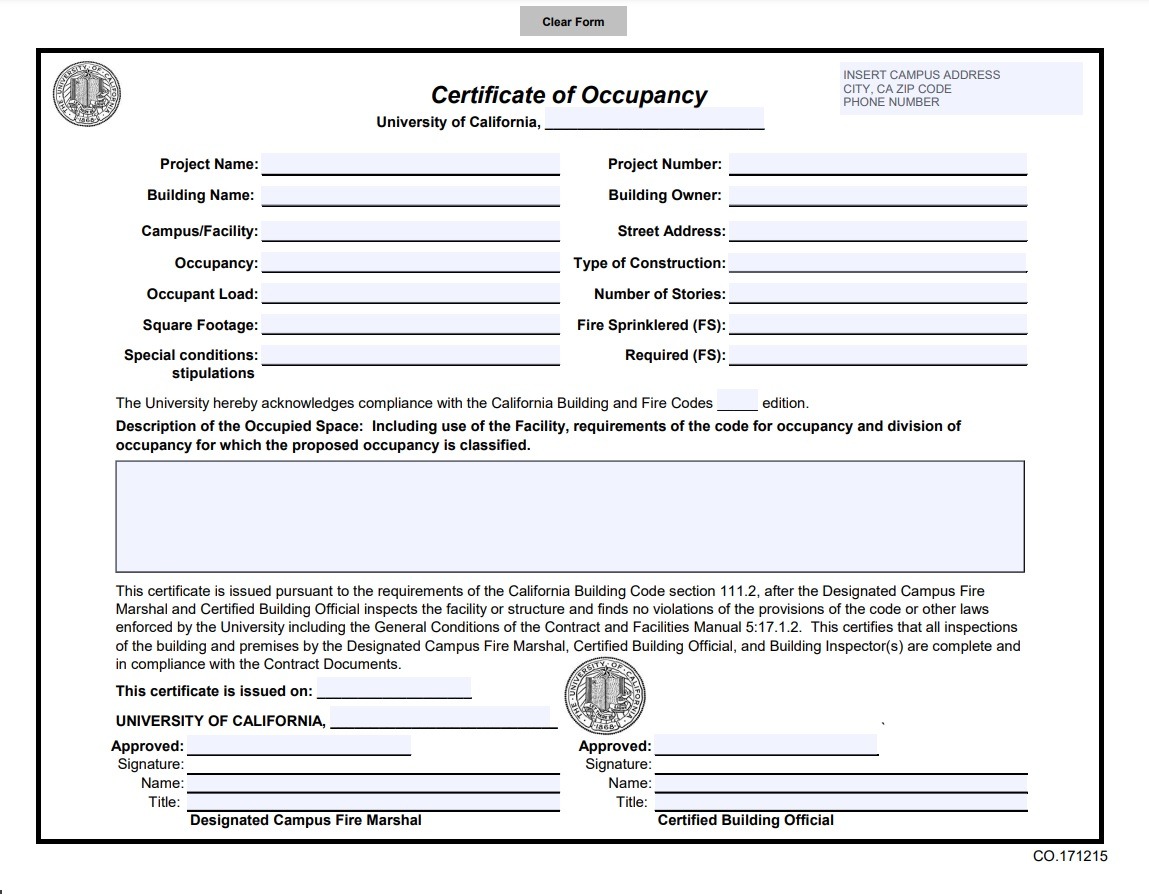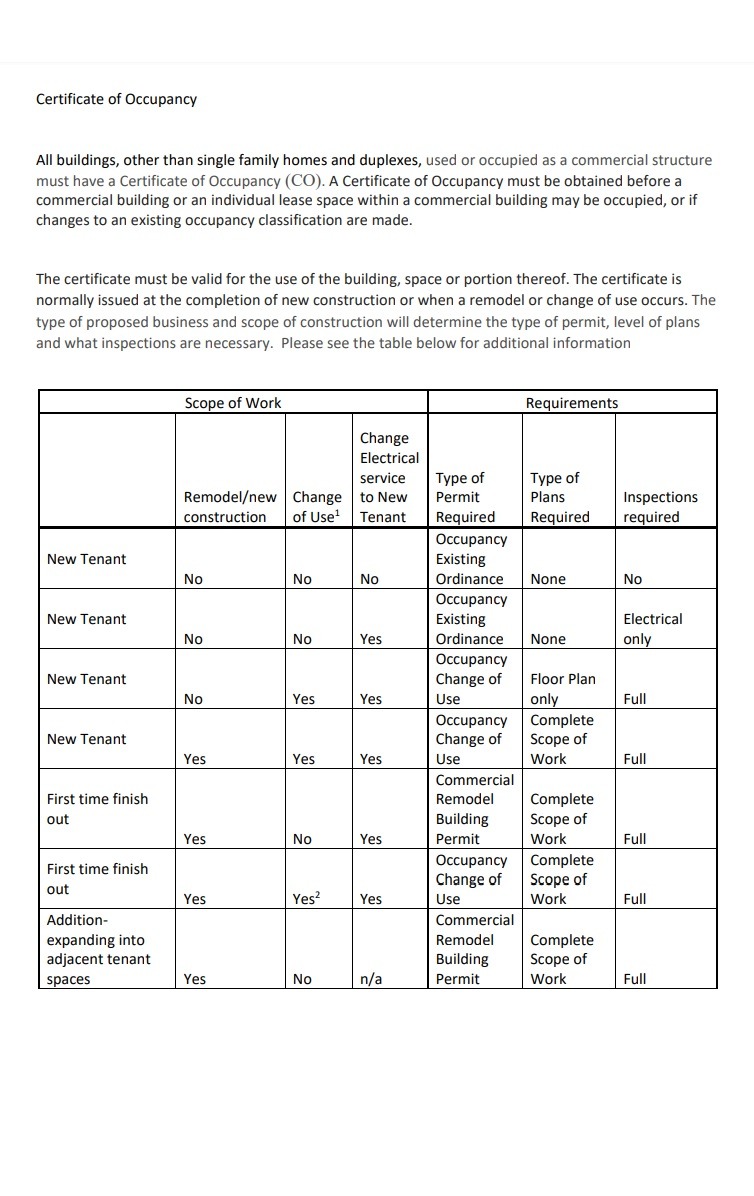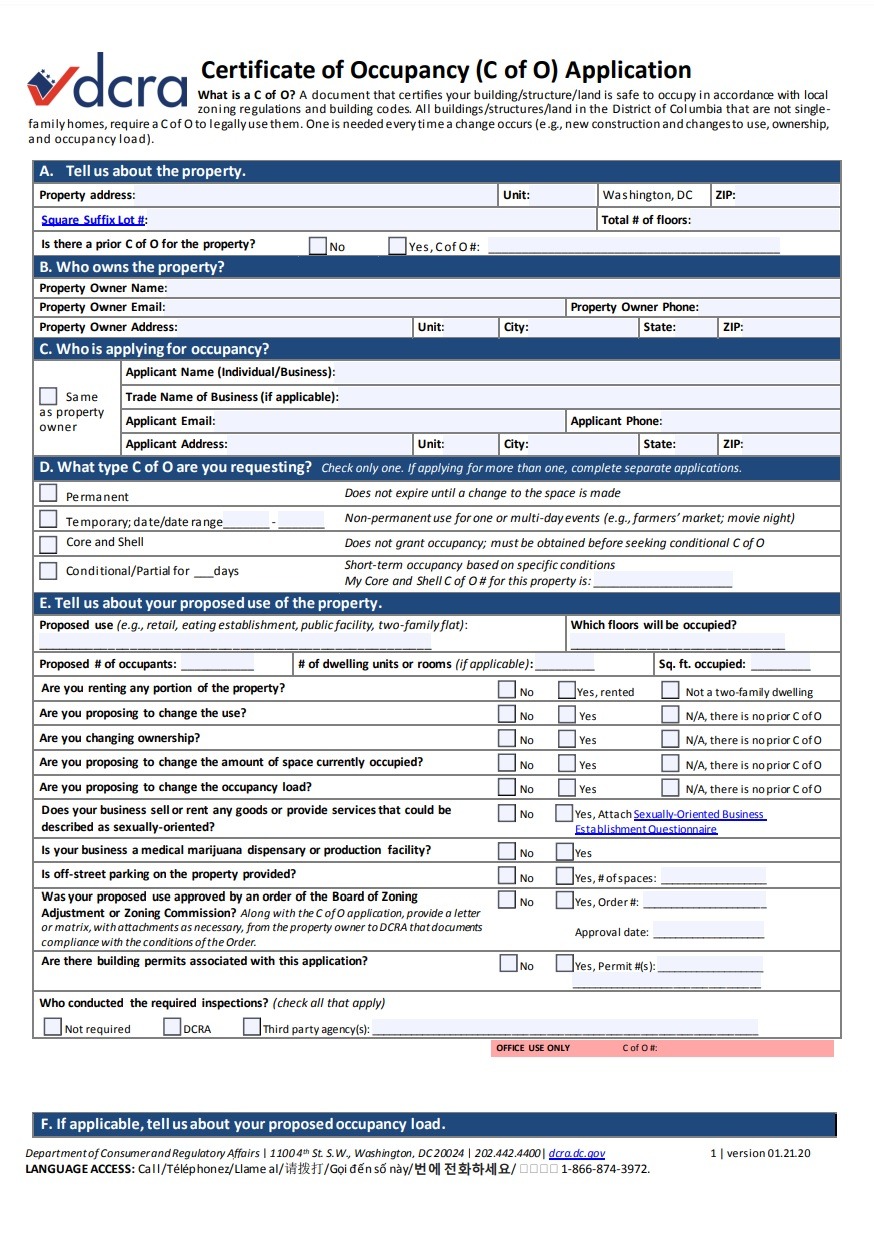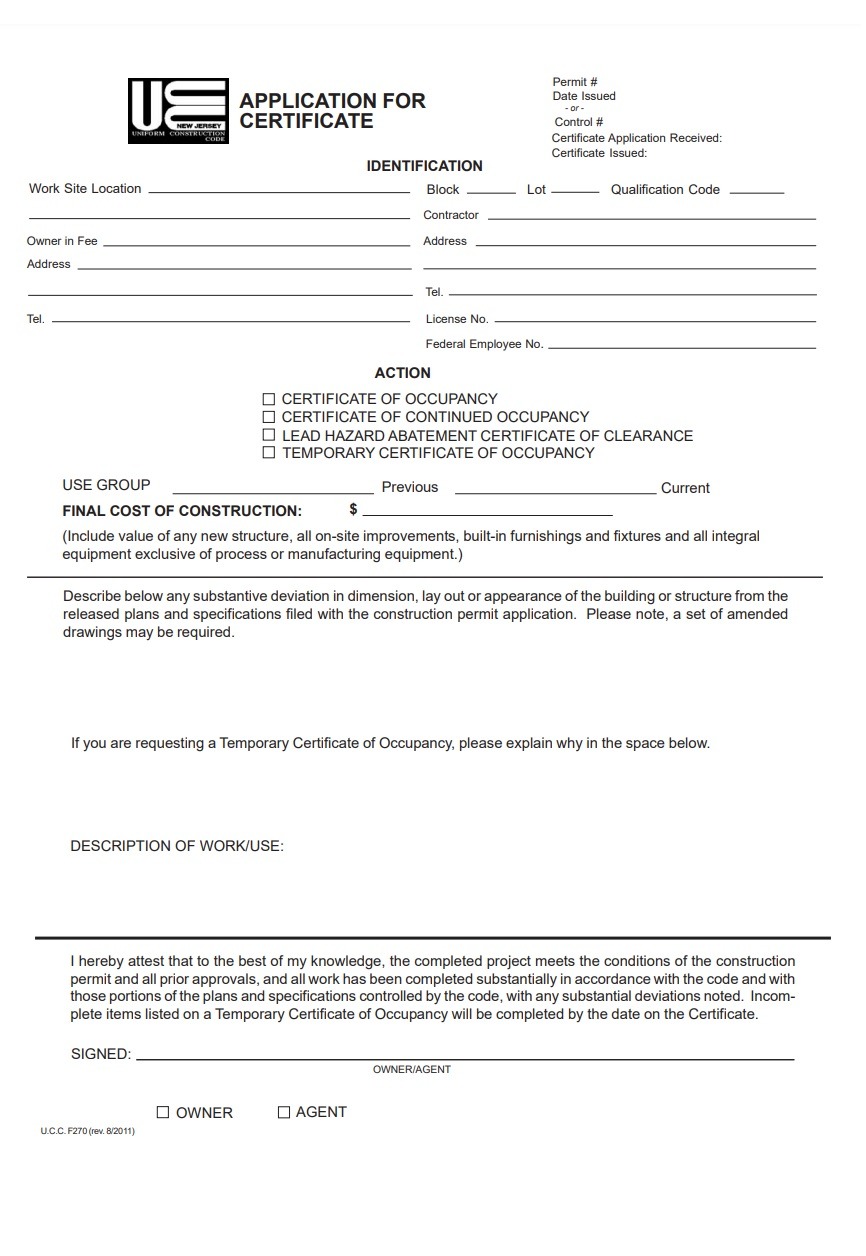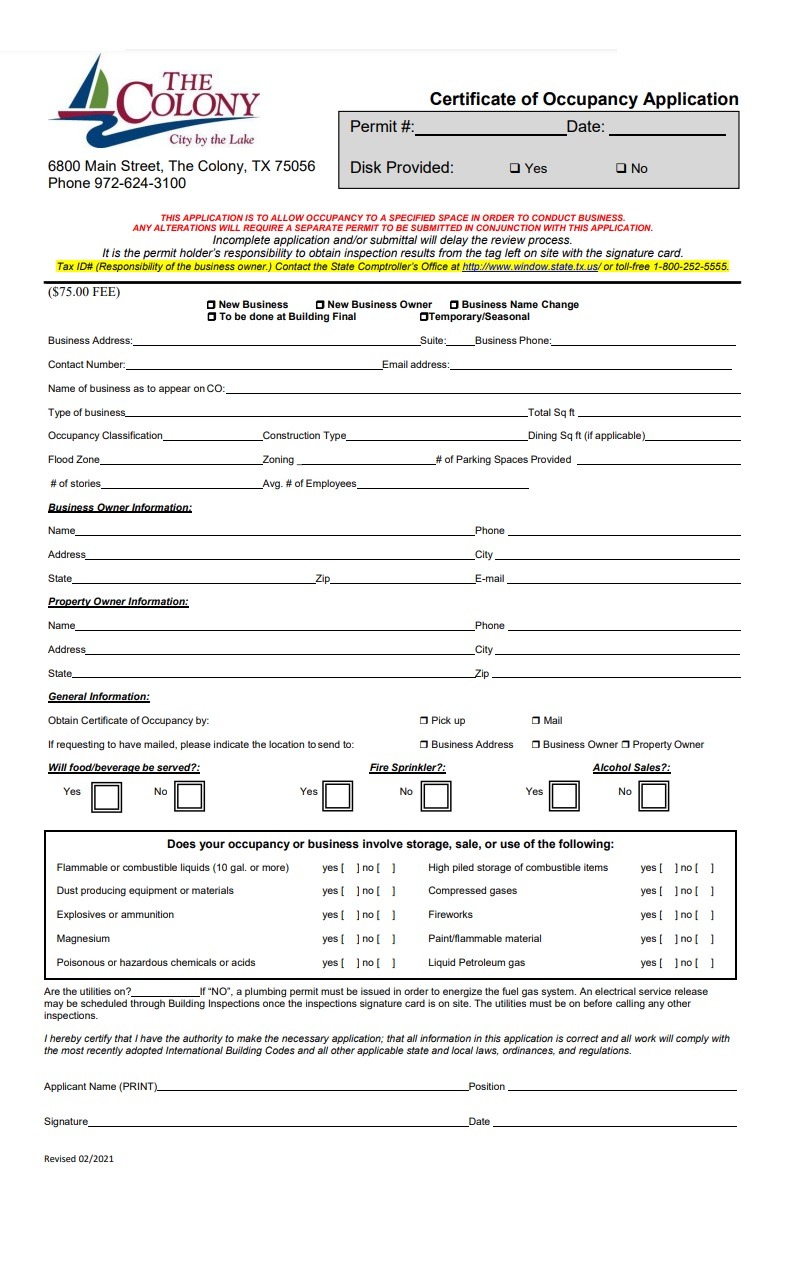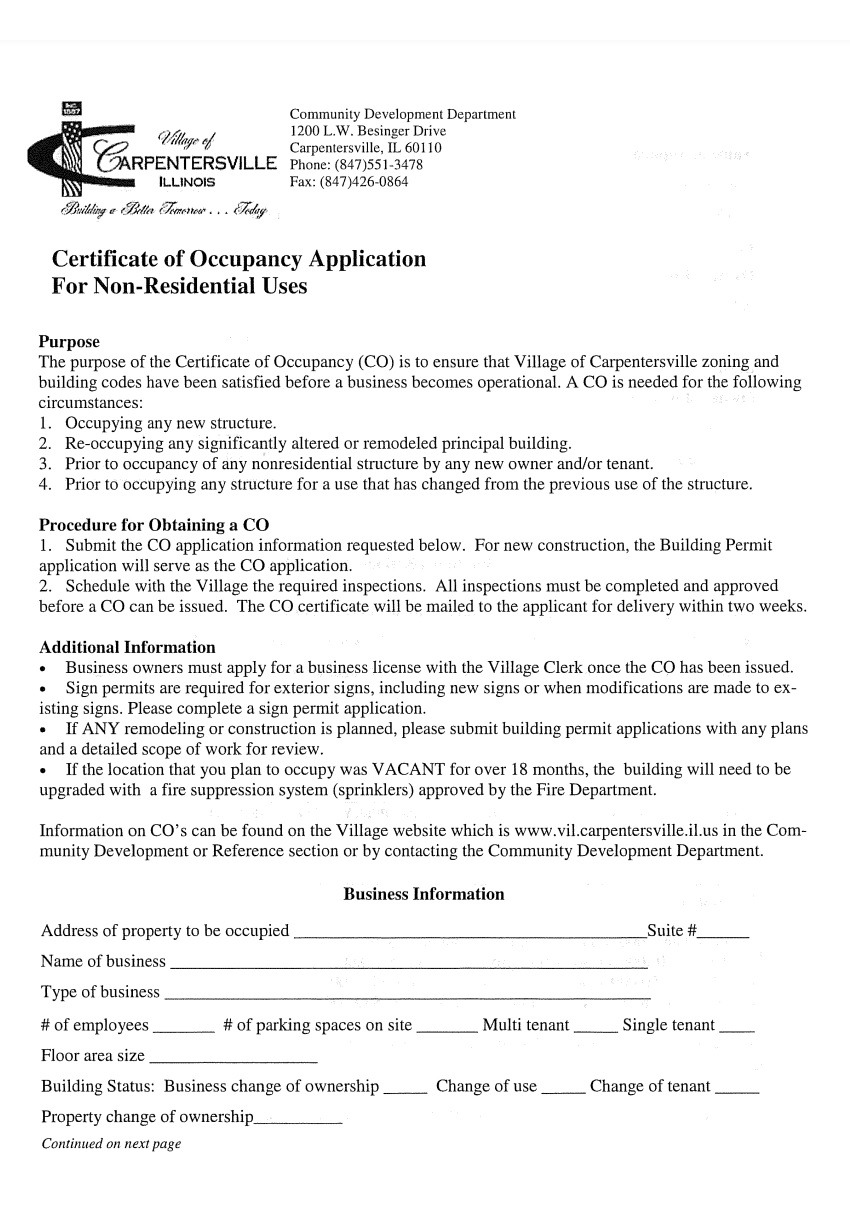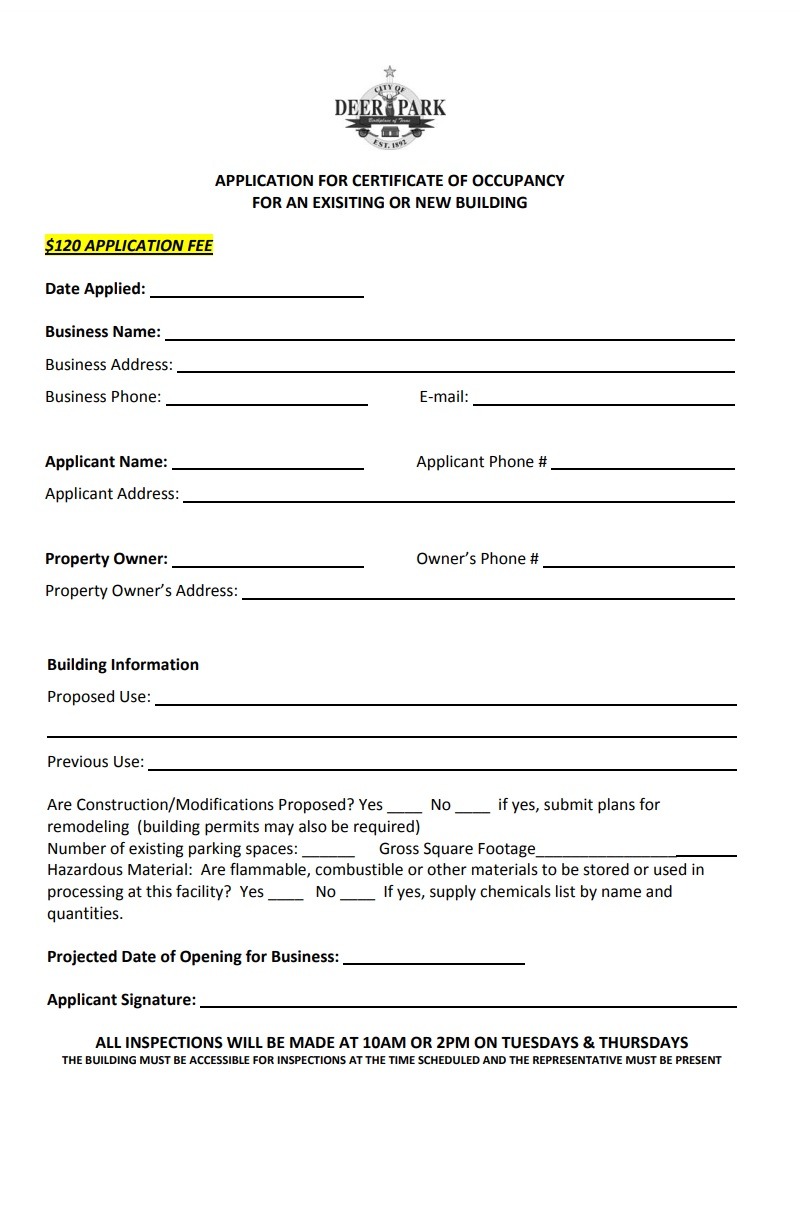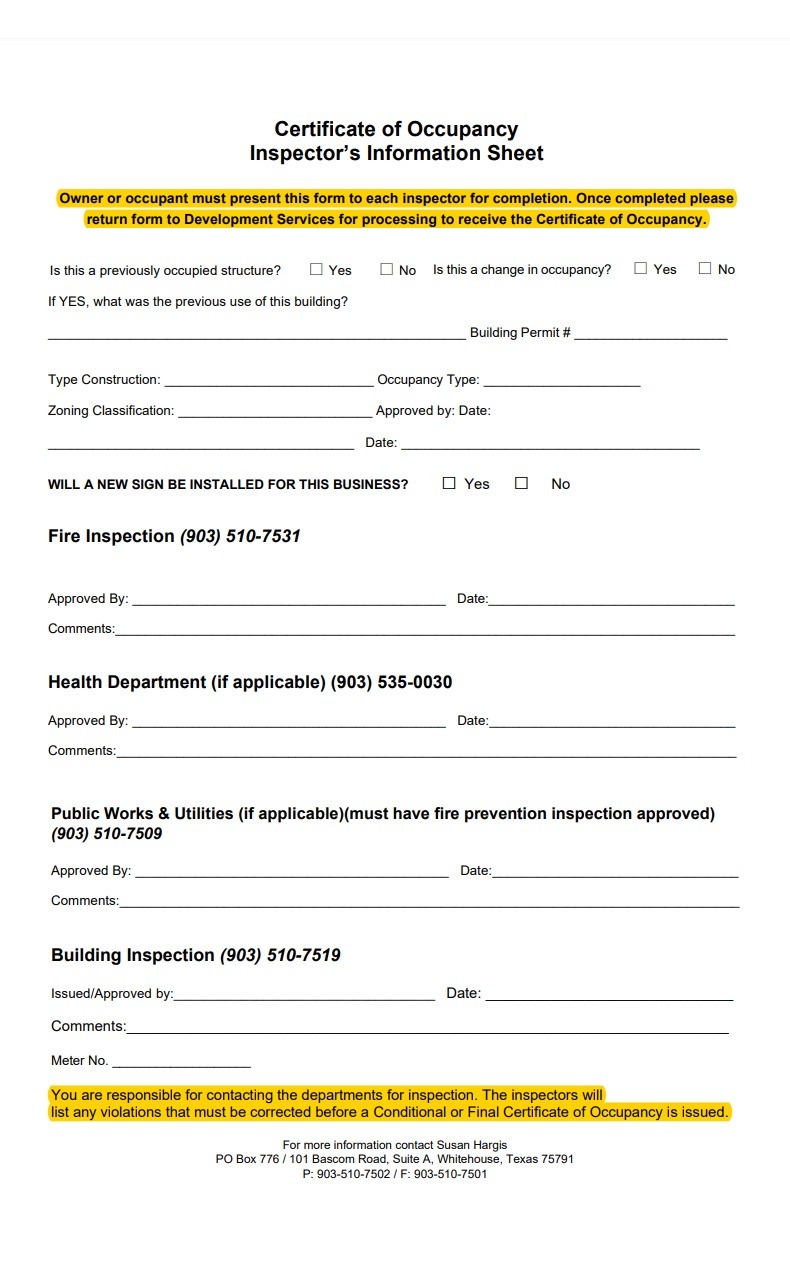A certificate of occupancy template firmly used to prepare or design a professional certificate which can be issued as occupancy certificate. Being a legal certificate, it demonstrates a certain structure like a house, building, office or flat is appropriate to colonize. Furthermore, this certificate depicts crucial particulars like; name of old owner, address and contact numbers. Apart from basic information, further information should also be mentioned which makes this certificate, a professional one. The intention of this certificate is to substantiate that the said property is perfectly worthy for living.
Purpose of Certificate of Occupancy
A certificate of occupancy provides information about a property and the owner. Following are the main elements which justified the purpose of this certificate. It includes;
⦁ Category of Property : The crucial segment which includes in this certificate is the information about the property, for instance; whether the said property is located in residential area, commercial or in industrial area. It clarifies the purpose for which this certificate is issued.
⦁ Authencity: An authentic certificate depicts a property is fully legal and comply the terms of housing and building institutes.
⦁ Suitability: This shows the said building, house, flat or office is fully secure, safe and good for living.
Necessity of Certificate of Occupancy
There are certain rules and regulations which are governed by local authorities for buying a property. A certificate of occupancy is utilized to confirm the legal status of a property. Having said that, a buyer must ensure to check legal status of the property before buying. He/she can visit local authorities to learn whether the said property is transferrable or can be mortgaged, if purchased through bank loan. A certificate of occupancy is dully required for certain conditions. These are given below for your quick reference;
-1: This certificate is mandatory before the start of construction. Without authentic certificate of occupancy, no one can start construction of a property.
-2: Moreover, before the transfer of ownership rights, a certificate of occupancy is required by law. The local authorities verify the authenticity of this certificate and the issued no objection certificate.
-3: This certificate is inevitable whenever the type of property is changed. For example, when someone requested to change their property type from industrial to a residential status.
-4: This certificate is also inescapable when the owner wishes to claim damage due to certain factors. There are certain unfortunate events like; earthquake, Tsunami and flood, which can cause damage to a property. Therefore, to apply for damage claim, an owner is required to submit this certificate along with damage evidence and application form. The owner can utilize these funds to restore the property into its original condition.
-5: Whenever someone wishes to take a property on rent, he/she must request a certificate of occupancy from the owner while writing a tenancy agreement. Similarly, the officials of local authorities can also ask for this certificate while routine checking.
From Where A Certificate of Occupancy Can be Obtained?
To get a certificate of occupancy, you have to visit the local government office either personally or through a website. Above all, a formal application has to be submitted by following official procedure, as described in law. Before issuing this certificate, the official authorities will analyze the application and will conduct inspection. Based on inspection, the authorized official will submit his/her report which will answer many questions like; electrical wiring is good, emergency doors are available, fire system is installed, building is constructed with approved building plan. After the finding of inspection report, this certificate is issued to applicant. In case, if there is any violation, then this department will write a letter to inform the applicant about the problem.
What Happens if you don’t Get it?
In the absence of a certificate of occupancy, you cannot enjoy the ownership rights like; rent out, to sell it or can use for residential or commercial purposes. While routine checkup, if government official identified, the certificate of occupancy is missed or not obtained. You can get a legal notice from court regarding eviction. Once you got the notice, you will need to provide this certificate. Otherwise, you will have to leave the property or surrender your ownership rights.
What if You don’t Pass Inspection?
To be eligible for getting occupancy certificate, a successful inspection is mandatory. You cannot claim this certificate, if inspection status showing any violation. During inspection, the official team will pay a visit to said property for compliance of different requirements. If they found out during visit certain violations, they will not pass inspection till the rectification of these violations. After fixing those violations, you can call for the inspection team to re-visit your property. However, an extra amount of fee will have to deposit. Only successful inspection is the key to get this certificate legitimately,
Benefits of a Certificate of Occupancy
There are benefits which can be driven from having a certificate of occupancy. These are given as follow;
• It is a legal document which confirms the ownership status of given property.
• A certificate of occupancy make certain that your amount which you have invested in given property is secure.
• To understand the purpose of the property, this certificate is inevitable.
• To avail certain facilities like water, sewerage and gas, you must have a valid certificate of occupancy.
• In the absence of this certificate, you can be charged with different penalties which can not only cause you financial loss but also can destroy your image in surroundings.
• A certificate of occupancy is required by a financial institute before approving financial facility like home loan or property loan.
• During any legal proceeding, it helps the tenant to confirm its valid stay at the given property.
Content of a Certificate of Occupancy
Following are the content of a certificate of occupancy which you can observe in a professional format;
• Certificate reference number.
• Property details like plot number, size, nature of property and location.
• The official file number.
• Name of owner or occupant.
• Date of issue.
• Validity period.
• Term and conditions.
• Approval authority.
• Signature of approval authority.
